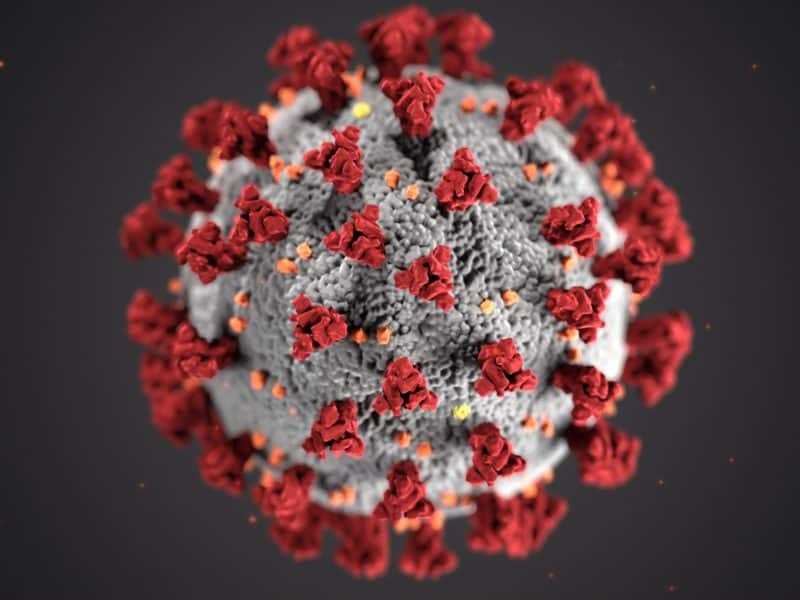December 27, 2021

All-cause mortality in Chennai increased by 41% during the pandemic. In a recent study led by CDDEP researchers, pandemic-associated all-cause mortality in Chennai, India was estimated by comparing comprehensive death records during the pandemic (March 2020-June 2021) to those issued pre-pandemic (January 2016-February 2020). Chennai’s pandemic all-cause mortality rates were equivalent to 5.18 excess deaths per 1,000 people, a number substantially higher than in the US and Europe, which had 1-2 excess deaths per 1,000 people. Mortality increased substantially but heterogeneously, indicating a notable underestimation of pandemic-associated mortality. Increased mortality during the second wave primarily affected disadvantaged communities. [The Lancet Infectious Diseases]
Accurately tracking current and future coronavirus variants faces many challenges. Since April 2020, the number of SARS-CoV-2 sequences submitted to an online genomic database has increased 10-fold. While this rapidly expanding database will allow variants to be more easily identified, poor or biased testing limits the detection of new variants. Additionally, not all countries have the capacity for regular sequencing, and rates may vary regionally, allowing for the undetected spread of mutations and portraying an inaccurate picture of the spread. [Nature]
Social media posts on COVID-19 vaccination side effects are of limited informative value. A retrospective analysis of 600 Twitter and Instagram posts assessed the quality and quantity of posts related to COVID-19 vaccine side effects. The majority of posts were on side effects’ occurrence, which were mostly mild. However, most posts also presented opinions or misinformation. Consequently, only 3-7% of posts could be considered as educational, validatable content. Researchers fear that increasing medical and healthcare-related misinformation in social media might affect both patients and practitioners. [Vaccine]
Single Pfizer vaccine dose causes robust immune response in SARS-CoV-2 experienced individuals. An observational study found that both humoral and antigen-specific antibody-secreting cell responses increased in individuals previously infected with COVID-19 following their first Pfizer vaccination, with 100- to 1,000-fold increases in anti-spike protein IgG antibody titers. However, the second vaccine dose produced a more muted response in these individuals. Comparatively, humoral and antigen-specific antibody responses in uninfected, vaccinated individuals increased after each dose. Individuals with and without previous SARS-CoV-2 infection had an increase in receptor binding and cytotoxic immune cells following vaccination. [Science Translational Medicine]
Enabling domestic hand hygiene across 46 least developed countries would cost US$12.2-15.3 billion. This value, spread over 10 years, was created from a model of the total economic cost of universal hygiene in household settings. It accounts for promotion interventions (42%), soap (36%), handwashing facilities (13%), and water (9%), which could alternatively be framed as $254 per-household costs over the same 10-year period. Mobilizing government and partner resources could cover these costs, which could be reduced through utilizing economies of scale and integrating hand hygiene with other behavioral change campaigns. [BMJ Global Health]
Mandatory COVID-19 certification increases vaccination rates before and after implementation. A modeling study assessed the relationship between the introduction of COVID-19 certification and vaccine uptake in Denmark, Israel, Italy, France, Germany, and Switzerland. Mandatory COVID-19 certification increased vaccination rates in countries with lower-than-average uptake levels but had a little-to-no effect in countries with near-average rates or limited vaccine supply. Such interventions can influence vaccine complacent or hesitant groups, particularly individuals under 30, and may increase vaccinations in individuals aged 30-49 if implemented under certain circumstances. [The Lancet Public Health]
COVID-19 vaccine strategies must focus on severe disease and global equity of at least one dose. Constraining vaccine supplies have negatively impacted pandemic control. Ongoing high transmission rates have furthered the emergence of SARS-CoV-2 mutations and variants of concern, threatening to limit the effectiveness of future transmission prevention strategies. Experts suggest that vaccine strategies should focus on severe disease prevention, prioritizing first-dose administration to younger populations with high seroprevalence and two-dose administration to older populations with low seroprevalence. Booster doses should be primarily given to immunocompromised and older adults, as boosters for all may limit first-dose availability to other individuals, prolonging the pandemic cycle. [The Lancet]
Sickle hemoglobin’s protective effect against severe malaria varies based on parasite genotype. To determine if certain forms of Plasmodium falciparum can overcome sickle hemoglobin’s protective effects, 5,087 host and parasite genomes collected between 1995 and 2009 were analyzed. Sickle hemoglobin was found to have no protective effect against severe malaria in the presence of Pfsa1+, Pfsa2+, and Pfsa3+ alleles. Further surveys, including asymptomatic and uncomplicated cases, are needed to fully understand the protective effect of sickle hemoglobin against severe malaria, particularly in relation to the genetic interaction between sickle hemoglobin and these three parasite loci. [Nature]
Fluoroquinolones and trimethoprim at risk for antimicrobial resistance (AMR) in France. Researchers in France used data from peer-reviewed literature and national surveillance to evaluate environmental antibiotic contamination as evidence for future recommendations to mitigate AMR in the country. Wastewater treatment plants’ effluents were identified as a major contamination source, spreading organic waste and contaminating aquatic environments. Within treated wastewater and other human-polluted water sources, fluoroquinolones and trimethoprim had high and medium AMR risk. Future monitoring of representatives of the fluoroquinolone, trimethoprim, sulfonamide, tetracycline, and aminoglycoside families in aquatic environments is recommended. Countries with similar attributes seeking to understand their own environmental dimension of AMR may have comparable findings. [Environment International]
The creation of a big data umbrella could support modeling of diarrheal disease burden in low- and middle-income countries. The opportunities big data and mobile health (mHealth) approaches have in diarrheal disease management in children in low- and middle-income countries are substantial, yet the risks and lack of ethical guidelines, guaranteed privacy, governance, and transparency surrounding analytics highlight their limitations. Additionally, integration of mHealth into healthcare systems poses several challenges in relation to big data, as poor, incomplete data can result in systematic biases and lack of within-country representativeness. Creation of centralized One Health databases with cloud-based storage could enable gathering of information for modeling of diarrheal disease burden and assist in the compilation of guidelines for its management. [The Lancet Infectious Diseases]
Photo: Unsplash











